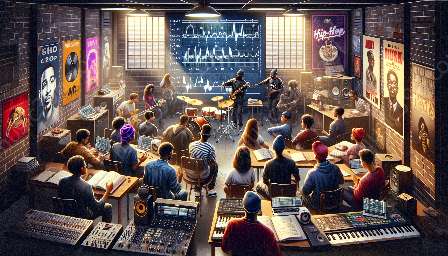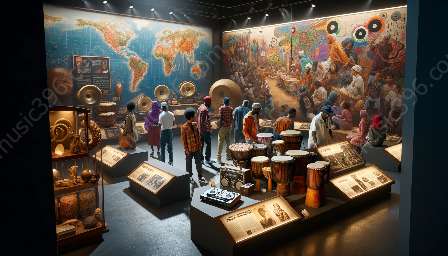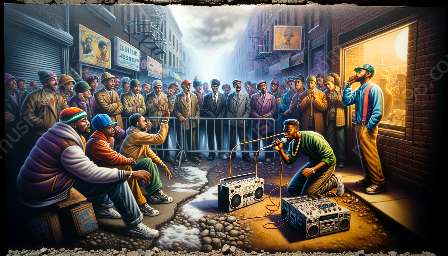Urban music is a broad genre encompassing various styles and influences, with hip-hop being a significant component. When examining how urban music styles vary across different regions, it's important to consider the impact of cultural, social, and geographical factors on the evolution and diversity of these musical forms.
Regional Variations in Urban Music
Urban music, including hip-hop, has evolved distinct regional variations that reflect the cultural and societal characteristics of different geographic areas. In the United States, for example, cities like New York have played a central role in shaping the sound and style of East Coast hip-hop, characterized by intricate lyricism and jazz-infused beats.
On the West Coast, particularly in Los Angeles, the emergence of gangsta rap brought a distinct and gritty sound to hip-hop, reflecting the realities of urban life in the area. Meanwhile, in the southern region of the US, cities like Atlanta have been pivotal in popularizing trap music, known for its heavy bass, intricate hi-hats, and lyrical themes centered around street life and hustling.
Internationally, regions such as the United Kingdom have developed their own unique urban music styles, with the grime genre gaining prominence in urban areas like London. Grime is characterized by its fast-tempo beats, aggressive delivery, and raw lyrical content, reflecting the social and cultural landscape of the urban environment.
Cultural and Social Influences
The regional variations in urban music styles are often deeply connected to the cultural and social influences present in different regions. For instance, the cultural melting pot of New York City has contributed to the diverse and multi-faceted nature of its hip-hop scene, with artists drawing inspiration from an array of cultural traditions and experiences.
In contrast, the influence of the Caribbean diaspora has significantly shaped the sound of urban music in cities like Miami, where elements of reggae, dancehall, and other Caribbean genres have seamlessly blended with hip-hop, resulting in a unique fusion of styles.
Similarly, in Europe, the impact of immigration and multiculturalism has played a crucial role in shaping the urban music scenes of cities like Paris and Berlin, where artists from diverse backgrounds bring their own unique perspectives and musical influences to the forefront.
Geographical and Environmental Factors
Geographical and environmental factors also play a significant role in shaping the sonic landscape of urban music. The gritty and industrial backdrop of cities like Detroit has influenced the raw and mechanical sound of its hip-hop and electronic music scenes, reflecting the urban decay and post-industrial landscape of the city.
Conversely, the sunny and vibrant climate of cities like Miami has contributed to the energetic and lively nature of its urban music, with artists drawing inspiration from the city's dynamic atmosphere and cultural diversity.
The Evolution of Hip-Hop
Hip-hop, as a cornerstone of urban music, has constantly evolved and adapted to different regional influences, leading to the emergence of sub-genres and styles unique to specific areas. From the boom-bap sound of the East Coast to the laid-back G-funk of the West Coast, hip-hop has proven to be a versatile and adaptive genre that reflects the vibrancy and diversity of urban environments around the world.
As global connectivity continues to expand, the cross-pollination of urban music styles from different regions has become more prevalent, leading to the emergence of hybrid genres and cross-cultural collaborations that further enrich the tapestry of urban music.
Conclusion
The exploration of regional variations in urban music, with a specific focus on hip-hop, reveals the profound impact of cultural, social, and geographical factors on the evolution and diversity of these musical forms. The rich tapestry of urban music styles from around the world serves as a testament to the creativity and resilience of artists who continue to push boundaries and defy conventions, shaping the sound of urban communities and reflecting the dynamic nature of modern urban environments.




























